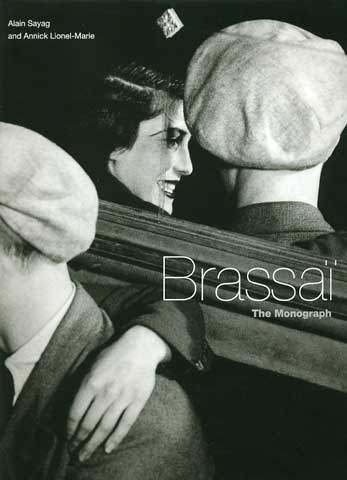The Monograph – book review.

Paris de Nuit, a collection of Brassai’s pictures published in 1933, remains one of those books of photographs that are essential to understanding the street photography school of the early twentieth century. There is none of the acidity of Cartier-Bresson or the remoteness of Kertesz. Rather, there is a feeling that the photographer is one with his subjects in a city he loves dearly.
This tome, The Monograph, published in 2000 by Bulfinch, has much content from that classic, all of it reproduced in deep toned, juicy monochrome. While technique is never an issue with Brassai, always being superb, the large scale of this book only emphasizes just how good he was, considering the great limitations of the equipment of his day. This is 1933, for goodness sake, and no, there were no 5 frames-per-second digital cameras with shake reducing lenses available.
Something new for me, gleaned from this book, is how many of Brassai’s pictures were crops of a larger negative. Sometimes one negative would result in two or three separate images. Shocking? Absolutely. Justifiable? Totally. If it’s good, what do you care whether the whole frame was printed (what a silly pretentious idea) or not?
And if you thought the perversions of San Francisco, or earlier, New York and London, were in some way original, you need only check this book to learn that there is nothing new under the sun.
Degas was a fine photographer given the limitations of the medium in his time. His paintings speak loudly of the photographic world to come. Many images here conjure up memories of Degas’s L’Absinthe and the lives of the down-and-outs of cafe society. Had Edgar Degas lived another thirty years, these are the pictures he would have taken. Brassai realized that vision. See it in this fine book.